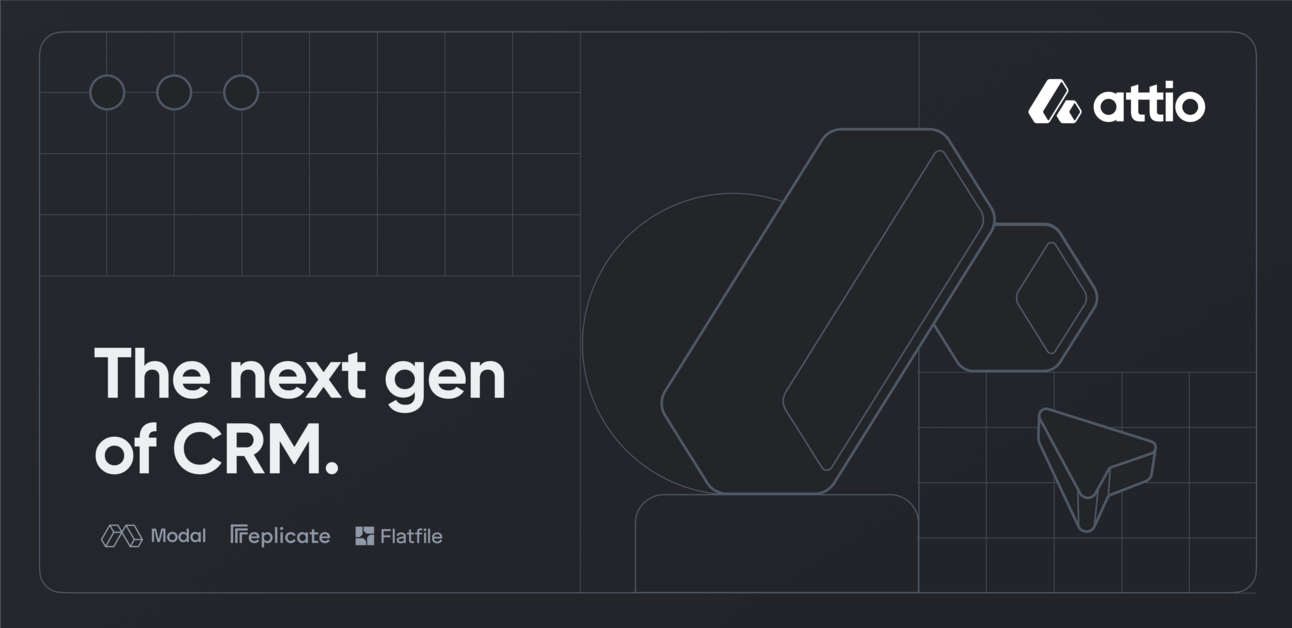Was this newsletter forwarded to you? Sign up to get it in your inbox every week.
(Signing up means fewer headaches—unless you enjoy those)

⚙ Hi {{first_name_tally|Operator}},
Have been thinking about this quote: 🤑
“Most people are interested. Few are truly committed.
Interested people act when it’s convenient; committed people act no matter what.
Interested people do the minimum; committed people push beyond limits.
Interested people wait to be told; committed people take the initiative.
Fully committing is the key to accomplishment.”
- Rameel

PRESENTED BY ATTIO
The next generation has arrived
Most CRMs were built for yesterday.
Attio is built for what's next.
Attio is an AI-native CRM platform built for builders of the future. Its powerful data structure adapts to your business model, scaling you from seed stage to category leader.
With Attio, your CRM builds itself in minutes through automatic data sync, which enhances your operational workflows with actionable data.
Then unleash the full power of the platform - from AI-powered automations that handle even your most complex business processes, to our research agent that can help with prospecting and lead routing at scale.
Join industry leaders like Flatfile, Replicate, Modal and more.
PRESENTED BY SET & FORGET
Imagine the seamless Google Workspace of your dreams
If you're paying for tools that don't meet your needs, or you're lost among all the Google Workspace options, it's time for a change.
Set & Forget specializes in custom Google Workspace development that's designed specifically for your business.
Why settle for inadequate tools when our developers can muscle your Google Sheets into peak performance? Custom solutions that work as hard as they do, no sweat required.
Thanks to our sponsors who keep this email free. Interested in sponsoring these emails? See our partnership options here

Jobs, jobs, and more jobs
Here are 20 YC-backed companies (with <30 employees) that are hiring OPERATION focused roles right now:
Upsolve AI - Customer-facing analytics as a service (London)
Tempo Labs - Visual Editor for React (Toronto)
Truss - Banking for construction (SF / Remote)
Origami Agents - Agents that find your perfect customers (SF)
Distro - AI co-pilot for sales reps at industrial wholesale distributors. (Palo Alto)
Quindar - Monitor and automate satellite operations (Denver)
Agave - Financial data infrastructure for Construction (SF)
Tandem - Marketplace to help companies lease and share office space (NYC)
Julius - AI Data Scientist (SF)
Firecrawl - Extract AI ready data from the web (SF)
Phonely - AI call centers (SF)
Metriport - Open-Source Universal API for Healthcare Data (SF / Remote)
Continue - Open-source AI code assistant (SF)
TrueClaim - AI-powered healthcare TPA. (SF)
Brainbase - AI workflow automations for enterprise (SF)
Roame - Google flights using credit card points and miles (SF)
Airgoods - The wholesale marketplace for food & beverage (NYC)
Spot Health - At-home diagnostics as a service (Remote)
Craniometrix - Care platform for Alzheimer's disease (NYC)
K-Scale Labs - Open-source humanoid robots (Palo Alto)
P.S. Searching for your next big thing? Fill this out, and we’ll intro you

The Hidden Tax of Saying Yes
Insight from Asana
Last week, my friend Tom called me, exhausted. "Remember that 'quick partnership' I mentioned? Three months in, and we've spent more time wrestling with compliance docs than writing actual code."
Unsurprisingly, I’ve faced the same problem as Tom.
In my last role as COO, I watched a "straightforward" product launch morph into a six-month odyssey.
After close to a decade in operations, you’d think that I’d have developed a sixth sense for these seemingly innocent requests that turn into organizational quicksand. But that’s not true! Turns out that relying simply on intuition is a recipe for disaster.
So I started an experiment. Every "yes" that I thought would trigger a cascade of unexpected decisions, I’d create a decision tree.
Not the neat ones you see in strategy presentations, but the messy, real-world kind where every branch spawns three more problems to solve.
Take manufacturing, for instance. "Should we build in-house or outsource?" sounds simple enough. But pull that thread, and suddenly you're facing an avalanche of questions:
Where do we find specialized talent?
How long is training?
What happens if they leave?
Who manages vendor relationships?
How do we handle quality control?
What's our backup plan when everything inevitably goes sideways?
Let me show you how these deceptive "quick yeses" play out in reality.
Our finance team once approached me about switching payment processors, excited about saving 2% per transaction. When we mapped out the decision tree, the true cost emerged:
six months of engineering resources we didn't have
three weeks of customer service retraining we couldn't spare
a three-year contract with exit fees that made my palms sweat
So how do you map these decisions effectively?
When I'm staring at a whiteboard now, I start with three columns:
What could go wrong (and how much it'll cost)
What we need to pull this off (the real resource list, not the sanitized one)
Where we hit the point of no return (because timing matters)
For the payment processor example, our "what could go wrong" list included integration bugs during Black Friday, support queues hitting four hours, and engineers struggling with legacy code - each carrying real costs in dollars, time, and team morale.
But here's the thing - sometimes mapping it all out shows you a better way forward. Maybe you phase the rollout instead of doing it all at once. Maybe you negotiate better terms. Or maybe you realize this isn't the right battle to fight right now.
The best operators I know don't just check for obvious risks. They ask the uncomfortable questions:
What happens if our assumptions are wrong?
What's our escape hatch if this goes sideways?
Which team is going to eat the hidden costs we haven't spotted yet?
And if someone gives you grief about being too cautious? Show them the graveyard of "simple projects" that turned into organizational death marches.
We've all got those stories.
P.S. Enjoy this piece? Worst garbage to hit your inbox? Reply to this email or tell me here!

Help me help you





